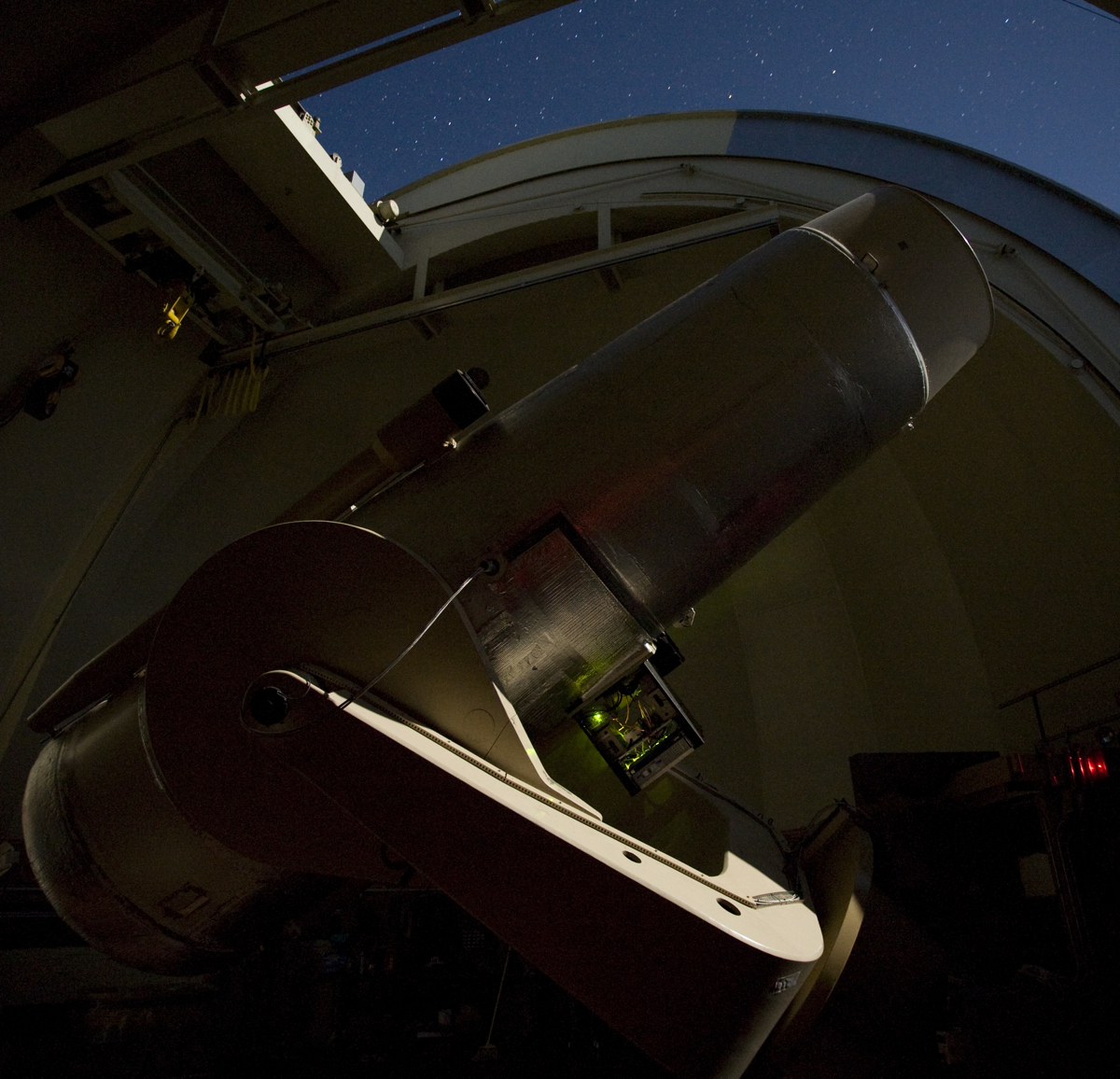How does that happen? Wide-field images of the sky are made with Palomar's 48-inch Samuel Oschin Telescope. A new portion of the sky is photographed approximately every 90 seconds. Data is beamed away via High Performance Wireless and Research and Education Network to the Internet and then on to Lawrence Berkeley National Laboratory and the National Energy Research Scientific Computing Center. Once there computers using an "autonomous inspection code" identify new sources and transmit the findings back to Palomar where the robotic 60-inch telescope gets called upon for follow-up observations. Once confirmation of the object is obtained from the 60-inch telescope (and in this case also from PAIRITEL) the next wave of observers is alerted.
In last week's discovery all of this happened as expected. Ultimately a spectrum was obtained with the 10-meter Keck I telescope which was used to identify the transient. The new object was found to be "a peculiar Type Ia supernova". The really amazing thing is that from discovery to spectrum less than half an hour had elapsed! That is an amazingly short period to time to photograph, identify and garner observations from multiple telescopes.
Since it began last year the Palomar Transient Factory has so far discovered and spectroscopically classified 432 supernovae. There should be plenty more discoveries to come.

The 48-inch Samuel Oschin Telescope, where the Palomar Transient Factory begins.



No comments:
Post a Comment